SIGGRAPH 1982: Art Show ’82
Chair(s):
- Copper Frances Giloth
-
- Real Time Design
- University of Massachusetts/Amherst
Location:
Boston, Massachusetts, United States of America
Dates:
July 26th-30th, 1982
Art Show Overview:
The SIGGRAPH ’82 Art Show celebrates the increasing access to electronic technology available to artists today and the growing aesthetic awareness in computer graphics.
Over one thousand entries for this juried exhibition arrived from all over the world. All the work was produced after January 1, 1980. The eighty-eight pieces in this show are diverse in style, medium and technique, holding as a common thread the pursuit of artistic excellence. The use of computers in these works shows that style is established by the artist and not identifiably derivative of the hardware, as was the case five years ago.
We invite artists to participate in Siggraph and encourage them to use it as a teaching and learning forum. Technological art is the future of communications and the source of new and powerful imagery.
Committee(s):
- Louise Etra
- Darcy Gerbarg
-
- New York University
- Columbia University
- School of Visual Arts
- Aaron Marcus
-
- Aaron Marcus and Associates
General Committee:
Website:
https://people.umass.edu/sig82art/
Visual Proceedings:
View PDF: [SIGGRAPH 1982: Art Show ’82] - 8.4MB
Exhibition Artworks:
-
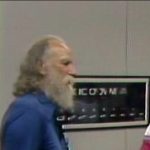
AFI/SONY Video Festival Poster
[Ed Emshwiller]
Categories: [2D & Wall-Hung] -
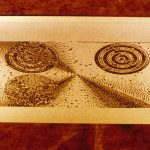
Aluminum
[Philip Morton]
Categories: [Animation & Video] [Installation] -

Beam and Bubbles
[Mike Marshall]
Categories: [2D & Wall-Hung] -

Bellybuttons
[James Hockenhull]
Categories: [2D & Wall-Hung] -
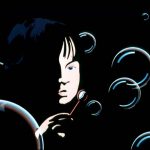
Bubble Girl
[Tony Johnson]
Categories: [2D & Wall-Hung] -

Bubblespiral
[Jane Veeder]
Categories: [2D & Wall-Hung] -

Building
[Michael T. Collery]
Categories: [2D & Wall-Hung] -

Bustergrid
[Jane Veeder]
Categories: [2D & Wall-Hung] -

Ca Roule
[Hervé Huitric] [Monique Nahas]
Categories: [2D & Wall-Hung] -

Carla's Island (still frame)
[Nelson L. Max]
Categories: [2D & Wall-Hung] -
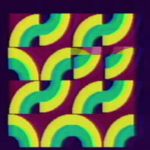
Circle Twist
[Frank Dietrich] [Zsusza Molnar]
Categories: [Animation & Video] -
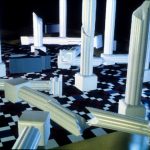
Columns & Arches
[Richard Balabuck]
Categories: [2D & Wall-Hung] -
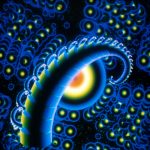
Crystal City
[Yoichiro Kawaguchi]
Categories: [2D & Wall-Hung] -
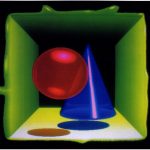
Crystal Space
[Yoichiro Kawaguchi]
Categories: [2D & Wall-Hung] -

DES07x3
[Copper Frances Giloth]
Categories: [2D & Wall-Hung] -
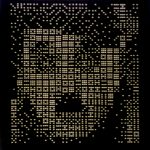
Domino Portraits: Groucho
[Kenneth C. Knowlton]
Categories: [2D & Wall-Hung] -
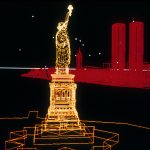
Dream Flight
[Philippe Bergeron] [Nadia Magnenat-Thalman]
Categories: [Animation & Video] -
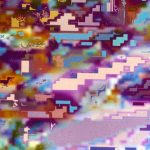
DVI Series 1 #8
[Darcy Gerbarg]
Categories: [2D & Wall-Hung] -

Five Responses to the Political Conditio...
[JoAnn Gillerman]
Categories: [Animation & Video] -
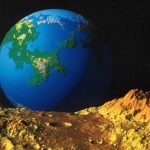
Fractal Planetrise According to Benoit M...
[Benoit B. Mandelbrot] [Richard F. Voss]
Categories: [2D & Wall-Hung] -
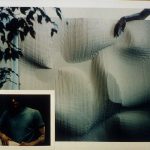
Fragment
[Rob Faught]
Categories: [3D & Sculpture] -

Frame Buffer Show
[James F. Blinn] [David Em]
-

Frozen Sun Cones
[Joanne P. Culver]
Categories: [2D & Wall-Hung] -
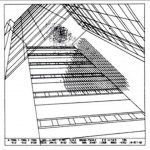
Galaxy
[Rob Fisher]
Categories: [3D & Sculpture] -

Grass Series V
[Colette Bangert] [Charles Bangert]
Categories: [2D & Wall-Hung] -
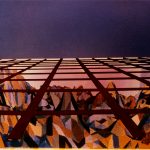
Home Again
[Richard Balabuck]
Categories: [2D & Wall-Hung] -
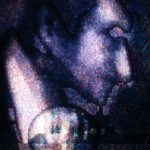
Impression
[Hervé Huitric] [Monique Nahas]
Categories: [2D & Wall-Hung] -
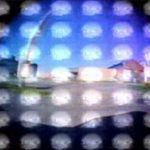
In Search of the Castle
[Woody Vasulka] [Steina Vasulka]
Categories: [Animation & Video] -
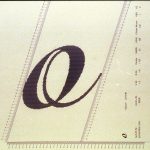
Isadora Type Family
[Charles Bigelow] [Kris Holmes]
Categories: [2D & Wall-Hung] -
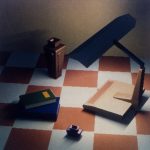
Isolet Belts Given by Linear Light Sourc...
[E. Nakamae] [T. Nishita]
Categories: [2D & Wall-Hung] -
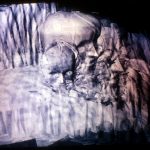
La Famille Camembert
[Hervé Huitric] [Monique Nahas]
Categories: [2D & Wall-Hung] -
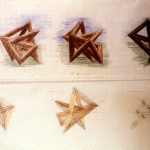
Labayrinth of Data List
[Frank Smullin]
Categories: [3D & Sculpture] -
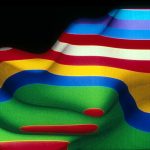
Landscape
[Melvin L. Prueitt]
Categories: [2D & Wall-Hung] -

Lighting Simulation of a Linear Light So...
[E. Nakamae] [T. Nishita]
Categories: [2D & Wall-Hung] -
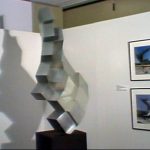
Little One
[David Morris]
Categories: [3D & Sculpture] -
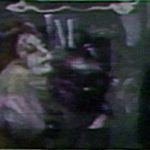
Mdogs*2
[Joel A. Slayton]
Categories: [2D & Wall-Hung] -
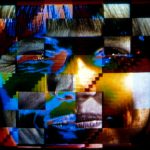
Mixed Up
[Howard Gutstadt]
Categories: [2D & Wall-Hung] -
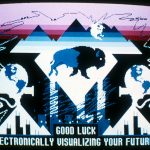
Montana
[Jane Veeder]
Categories: [Animation & Video] -
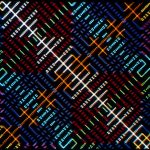
Munching Squares
[Henry Lieberman]
Categories: [2D & Wall-Hung] -
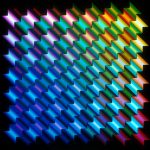
Mural
[Paul Jablonka]
Categories: [2D & Wall-Hung] -
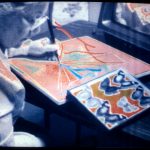
My New Black Book
[Sonia Sheridan]
Categories: [2D & Wall-Hung] -
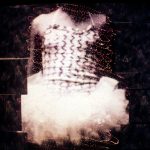
Newnorth
[Francis Olschafskie]
Categories: [2D & Wall-Hung] -

Night Castles
[Ned Greene]
Categories: [2D & Wall-Hung] -
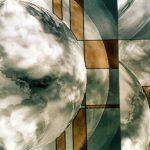
Nuworld 5
[Michael Assante]
Categories: [2D & Wall-Hung] -

Pentagon
[JoAnn Gillerman]
Categories: [Animation & Video] -
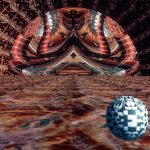
Persepol
[David Em]
Categories: [Interactive & Monitor-Based] -
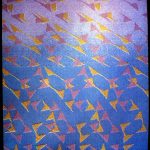
Phase Transitions
[Joan Truckenbrod]
Categories: [2D & Wall-Hung] -

Pillar of Smoke
[Eudice Feder]
Categories: [2D & Wall-Hung] -
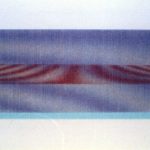
Pillar of Smoke and Fire
[Eudice Feder]
Categories: [2D & Wall-Hung] -
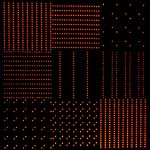
Point
[Tom Eatherton]
Categories: [Installation] -
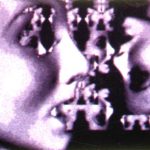
Reflections #3
[Bill Etra]
Categories: [2D & Wall-Hung] -
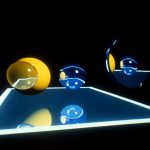
Refractions
[Robert Conley]
Categories: [2D & Wall-Hung] -
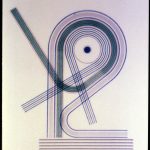
Ribbon Series
[Robert Mallary]
Categories: [2D & Wall-Hung] -
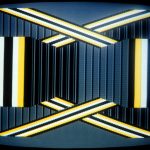
RST 0.03
[Richard Frankel]
Categories: [Animation & Video] -
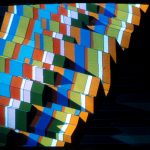
Santy Fold
[Harry Holland]
Categories: [2D & Wall-Hung] -
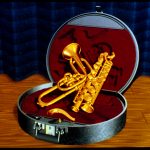
Saxobone
[Dick Lundin] [Lance Williams]
Categories: [2D & Wall-Hung] -
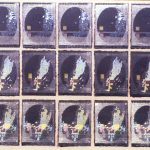
See The Beautiful Sea #65, #60, book
[Margot Lovejoy]
Categories: [Artist Book] -
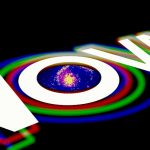
Selected Images From Nova
[David Geshwind]
Categories: [2D & Wall-Hung] -
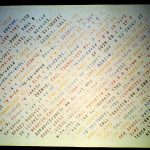
Self 3
[Ed Post]
Categories: [2D & Wall-Hung] -
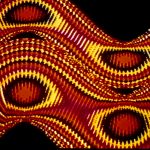
Snake, Rattle, Roll
[Frank Dietrich] [Zsusza Molnar]
Categories: [Animation & Video] -

Softland
[Thomas Porett]
Categories: [2D & Wall-Hung] -
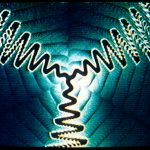
Spiral PTL
[Thomas A. Defanti] [Daniel J. Sandin]
Categories: [Animation & Video] -
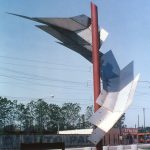
Spiral Wind Form
[David Morris]
Categories: [3D & Sculpture] -
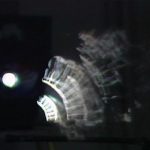
Steam Installation
[Stan Van Der Beek]
Categories: [Installation] -

Strata Variants
[Harry Holland]
Categories: [2D & Wall-Hung] -

Tama
[Bonnie MacDonald]
Categories: [2D & Wall-Hung] -
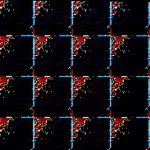
Untitled
[David Cook]
Categories: [2D & Wall-Hung] -

Untitled
[Harold Hedelman]
Categories: [2D & Wall-Hung] -
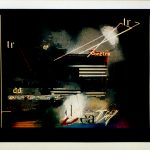
Untitled
[Joel A. Slayton]
Categories: [2D & Wall-Hung] -
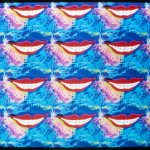
Untitled
[Larry Gelberg]
Categories: [2D & Wall-Hung] -

Untitled
[Melvin L. Prueitt]
Categories: [2D & Wall-Hung] -
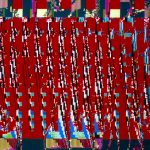
Untitled
Categories: [2D & Wall-Hung] -
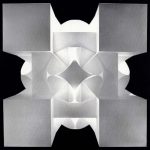
Van Leer Model
[Ron Resch]
Categories: [3D & Sculpture] -
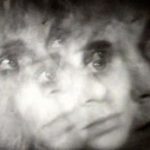
Video Haiku
[Barbara Sykes]
Categories: [Animation & Video] -
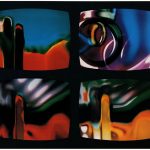
Video Still Lives
[Connie Coleman] [Alan Powell]
Categories: [2D & Wall-Hung] -
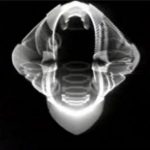
Videograms
[Gary Hill]
Categories: [Animation & Video] -
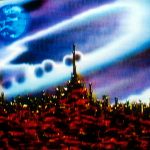
Voyage
[Tom DeWitt] [Vibeke Sorensen]
Categories: [Animation & Video] -
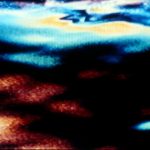
Wandawega Waters
[Daniel J. Sandin]
Categories: [Animation & Video] -
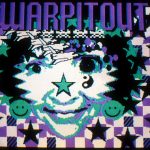
Warpitout
[Jane Veeder]
Categories: [Installation] -

White Knight in Armour as Usual. .
[Joan Shafran]
Categories: [2D & Wall-Hung]
Exhibition Writings and Presentations:
-
Title:
Art and Technology: Bridging the Gap in the Computer Age
Author(s):
Category: Essay
Abstract Summary:
Much as the majority of the art public has tried to ignore the art and technology phenomenon, it is no longer either possible or fashionable to do so. The large retrospective of video artist Nam June Paik at the Whitney Museum in New York in the Spring of 1982 was just one of numerous recent examples of the acceptance of the new technology in a traditional art environment. A lack of familiarity with the actual process by which the works are made, has caused the word “computer” in connection with art to be met with particular distrust out of the ill-founded fear that this mystifyingly complex machine might soon replace the artist in the creation of art. Yet in spite of the electronic implementation, computer-aided art is still in many ways as much a handcrafted product as conventional art forms but simply processed in a different manner. Furthermore, because most artists are as of yet unacquainted with the mechanics and potential of computers, their accomplishments on computer systems, which may assume various forms including color xerography, photo enlargements, plotter drawings or video, to name only a few, are often the product of intense collaboration in a laboratory-like environment between the artist and someone technically proficient in the computer field. This practice is in antithesis to the myth of the sculptor or painter struggling preferably in solitude in a studio to realize his artistic concepts in pencil, paint, metal, stone, or other common materials.
[View PDF]Title: Computers and the Visual Arts: A Retrospective View
Author(s):
Category: Essay
Abstract Summary:
“In the computer, man has created not just an inanimate tool but an intellectual and active creative partner that, when fully exploited, could be used to produce wholly new art forms and possibly new aesthetic experiences.”
[View PDF]Title: Toward Autonomous Reality Communities: A Future For Computer Graphics
Author(s):
Category: Essay
Abstract Summary:
It may live in a vacuum tube (for a few more years at least), but to hear the Mercantile Masters talk you’d think computer graphics lives in a political vacuum as well. For electronics, however, the last quarter-century has been equivalent to pulling back the string on a bow – the storing of enormous technological potential. Now the string is about to be released in the universal application of that technology: the next 25 years will be the flight of the arrow, propelling us into the Electronic Age and precipitating an historically unprecedented revolution in communications. And in the shadow of the Communications Revolution we begin to understand the awesome cultural and political implications of that protean force we refer to so feebly today as computer graphics.
[View PDF]



